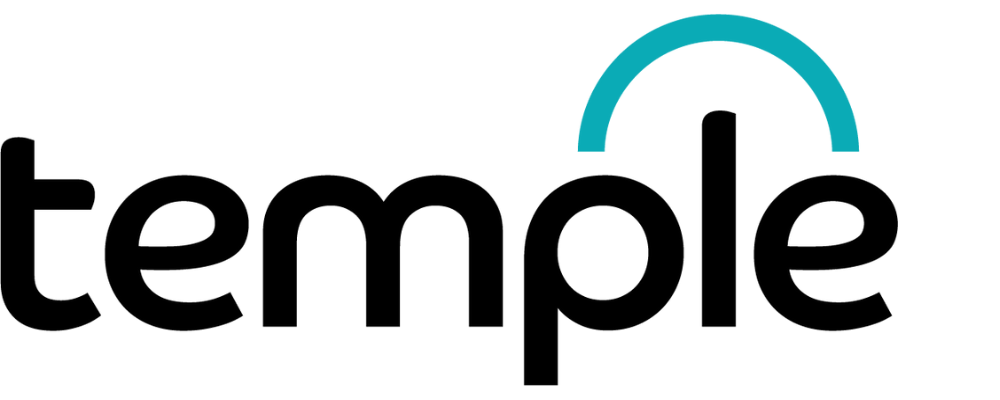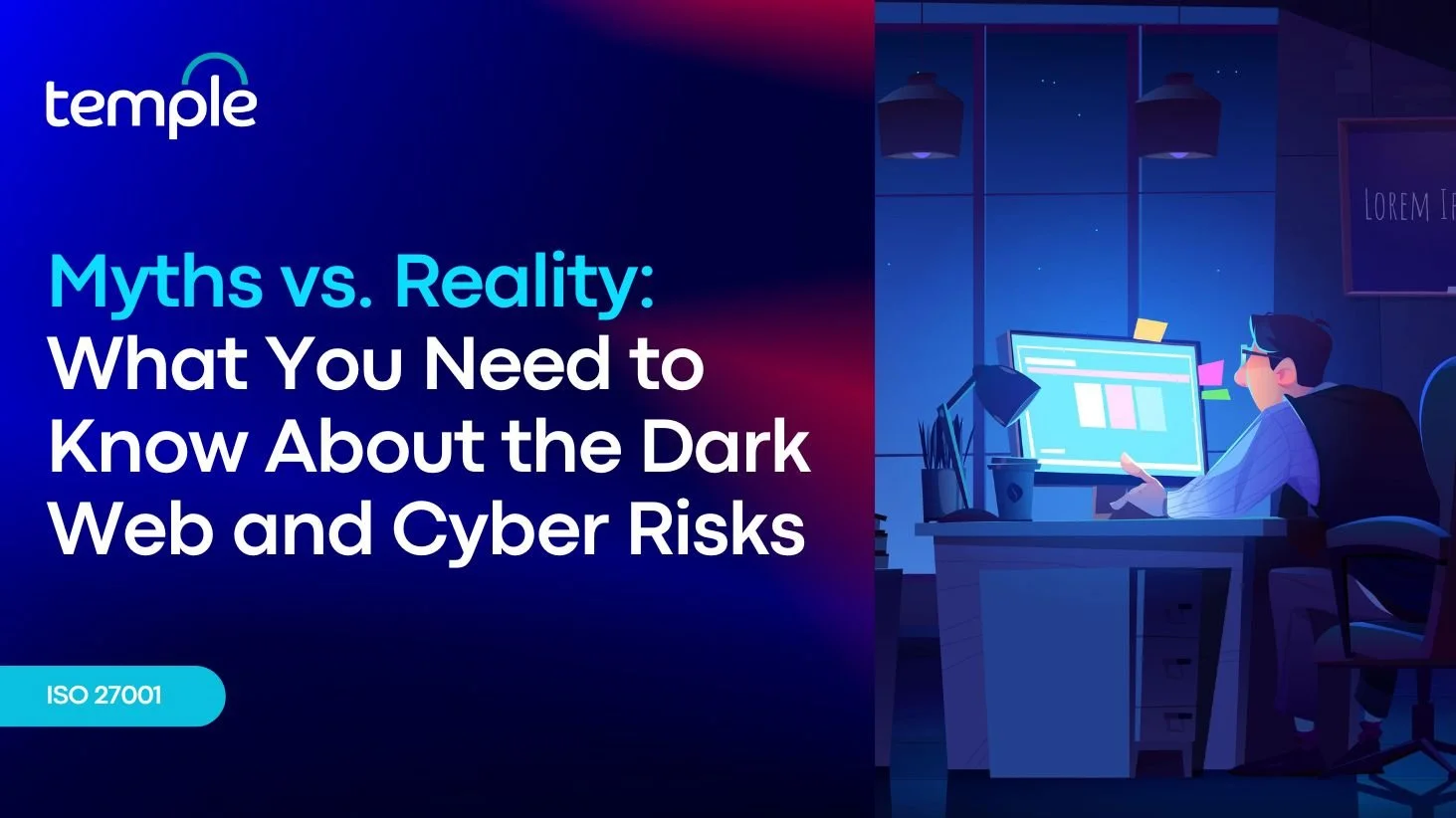Myths vs. Reality: What You Need to Know About the Dark Web and Cyber Risks
If you think the internet is just about browsing cat videos on YouTube or checking your emails, you’re missing out on a much bigger and darker side of the web. Below the surface of the World Wide Web lies the deep web and, even further down, the dark web. But what exactly is the dark web, and should we be scared of it or just get to know it a bit better?
As a team focused on cybersecurity and ISO 27001 training, we know the importance of understanding all aspects of digital safety – including the dark web. In this post, we’ll break down the truth about the dark web, its risks, and how to safeguard your data. And don’t worry, we’ve got some tips for you on how Temple QMS can help your organisation stay ahead with ISO 27001 consultancy and training.
What is the Dark Web?
The dark web is a hidden corner of the internet that’s not indexed by traditional search engines. In simple terms, it’s the online equivalent of a secret back alley where people can stay anonymous. To access it, users need special software like Tor (The Onion Router), which helps mask your identity and protect your location. Think of it as a secret tunnel that allows you to explore without anyone knowing you’re there.
But here’s the kicker – while the dark web is notorious for illegal activities like hacking, fraud, and the sale of stolen data, it’s not all doom and gloom. It’s also a place for privacy-conscious individuals, activists, and journalists in oppressive regimes who need a safe, anonymous way to communicate.
So, is the dark web something to fear? Well, there are risks, but with the right precautions, it can be navigated safely.
How the Dark Web Works
Once you enter the dark web, you'll find a wide range of activities happening, both good and bad. On the darker side, you’ll find:
Stolen financial data like credit card numbers and bank logins.
Compromised accounts for Netflix, social media, and even subscription services.
Counterfeit goods including fake IDs and money.
Illegal substances and weapons.
Hacking tools and services, like malware and exploit kits.
Data for sale, including medical records, personal photos, and more.
It sounds like a digital dystopia, doesn’t it? But, interestingly, the dark web is also a haven for whistleblowers, journalists, and human rights advocates who need to operate securely and anonymously. The anonymity it provides is essential for protecting freedom of expression in repressive countries.
However, just like any other part of the internet, navigating the dark web is risky. Cybersecurity threats like malware, data theft, and scams are everywhere. That’s where dark web monitoring becomes essential, especially for businesses looking to secure their data.
The Origins of the Dark Web
Here’s something many don’t know: the dark web wasn’t designed for illegal activity. It was originally created by the U.S. military in the 1990s to help people communicate securely and anonymously, especially in hostile areas. The tool used for this was Tor, which allowed military personnel to maintain their privacy while working in dangerous environments.
Soon, Tor found its way to the public, and voilà, the dark web was born.
Dark Web vs. Deep Web: What’s the Difference?
To make things clearer, let’s break it down into layers, like an iceberg:
Open Web (4-5%): This is the part we all use every day – websites you can access via Google or other search engines.
Deep Web (90-95%): A huge portion of the web, including your private email accounts, online banking, and subscription services. It's not illegal, just hidden.
Dark Web (<1%): The smallest part of the deep web, accessible only through special tools like Tor. This is where most of the shady stuff happens.
Is It Illegal to Use the Dark Web?
Now, here’s a common misconception – simply accessing the dark web isn’t illegal. It’s what you do there that can get you in trouble. Browsing anonymously, engaging in discussions, or researching privacy resources are all perfectly legal activities.
In fact, the dark web has some really useful and legitimate functions:
Secure communication for people in repressive regimes.
Privacy resources, such as guides for encrypted email.
Whistleblower platforms like the dark web version of WikiLeaks.
Anonymous forums for discussing current events without fear of surveillance.
The Risks of the Dark Web
While it has some beneficial uses, there’s no denying that the dark web can be a dangerous place. Here are a few risks to be aware of:
Malware: Malware, ransomware, and viruses are all too common, often hiding in links or downloads on dark web sites.
Scams: Scammers set up fake shops, asking for payment in cryptocurrency, only to disappear once they have your money.
Identity theft: Criminals often trade stolen personal data, which could put your sensitive information at risk.
Honey pot traps: Some illegal marketplaces are actually set up by law enforcement to catch criminals, so engaging with them could lead to arrest.
The Role of ISO 27001 and Cybersecurity Standards
At Temple QMS, we’re all about helping organisations stay secure. One of the best ways to protect against the threats lurking on the dark web is by implementing robust information security frameworks, like ISO 27001.
ISO 27001 is a global standard for information security management. By adopting this framework, businesses can manage and protect their sensitive data through effective risk management strategies. But how does it help with dark web threats?
Risk Management: ISO 27001 helps organisations identify, assess, and mitigate risks, including those emerging from the dark web.
Security Controls: ISO/IEC 27002 provides practical security controls to reduce the likelihood of breaches and data theft.
Incident Response: ISO 27035 outlines the best practices for responding to cyber incidents, including monitoring the dark web for stolen data.
With the right ISO 27001 training and consultancy from us, you can ensure your organisation is protected from these kinds of cyber threats. Our services are designed to help you integrate these internationally recognised standards into your business, ensuring you’re always a step ahead of potential cybercriminals.
Get Trained with Temple QMS
The dark web is a real concern, but with the right cybersecurity strategies, it doesn’t have to be a threat for your organisation. By embedding ISO 27001 into your organisation’s culture, you’re taking a proactive approach to data security. At Temple QMS, we offer comprehensive ISO 27001 training and consultancy to help your business navigate these challenges with confidence. Let us help you protect your business from the threats lurking on the dark web.
Stay secure. Stay smart. Get ISO 27001 accredited with Temple QMS.
If you’re ready to learn more, get in touch with us today!

